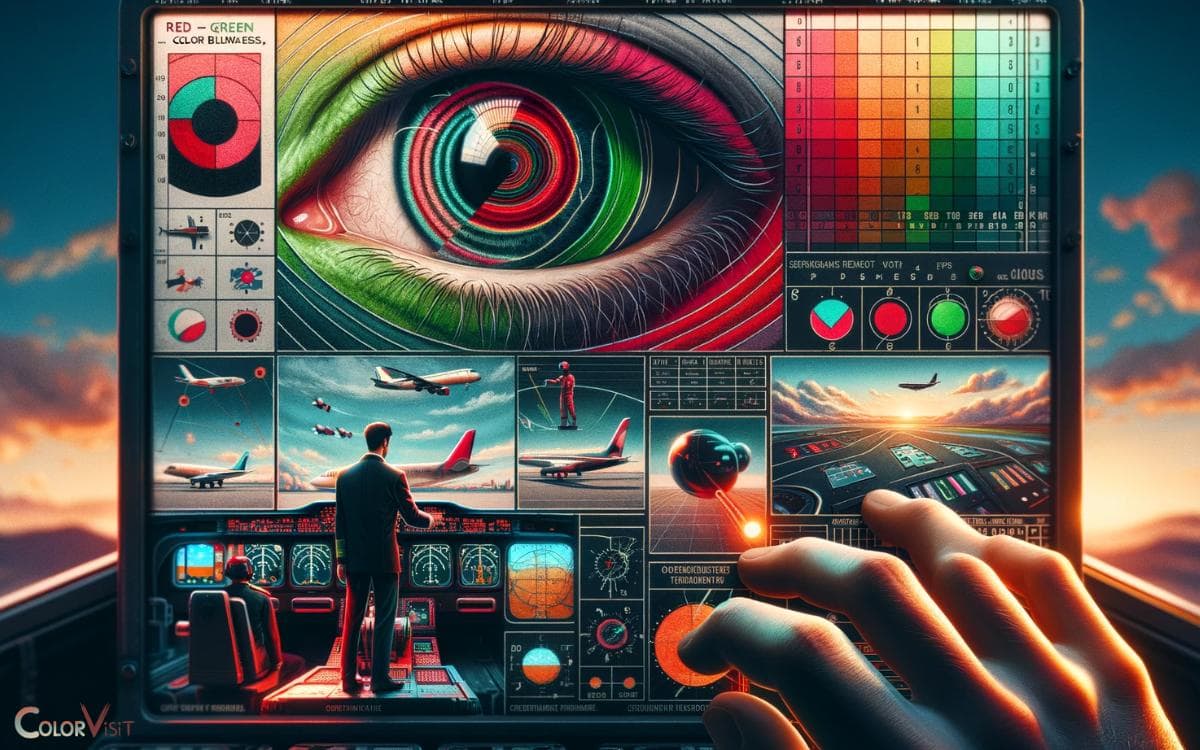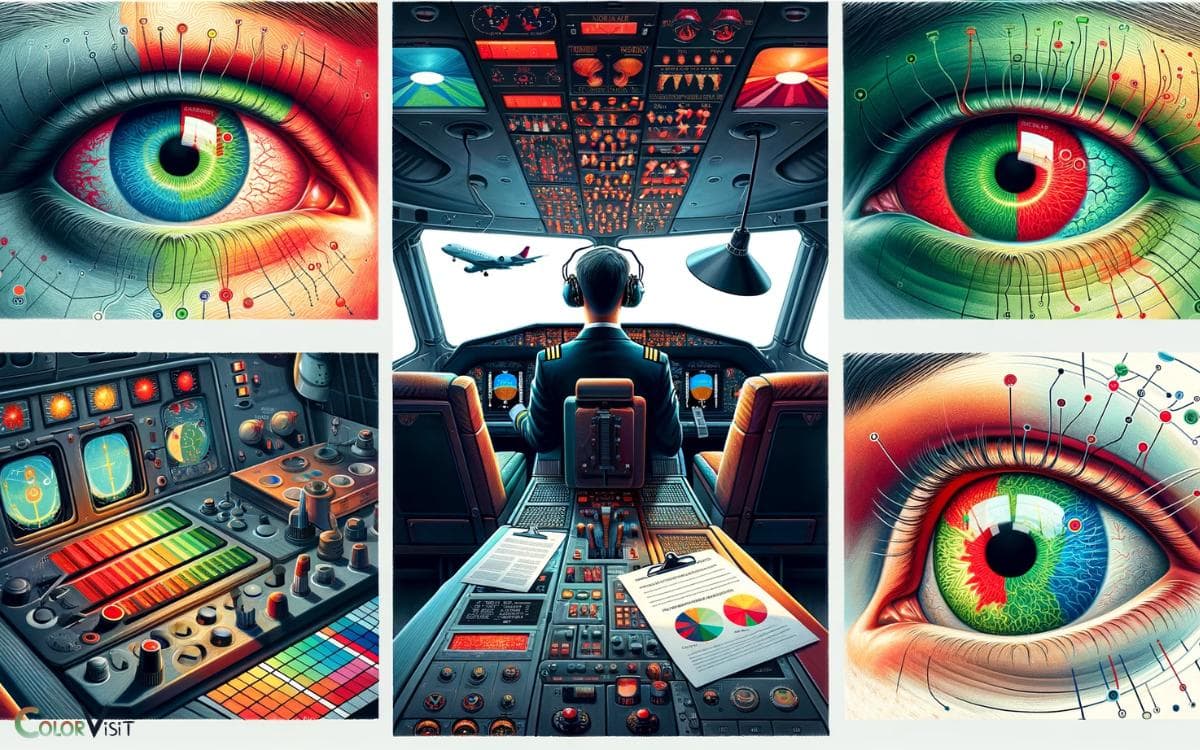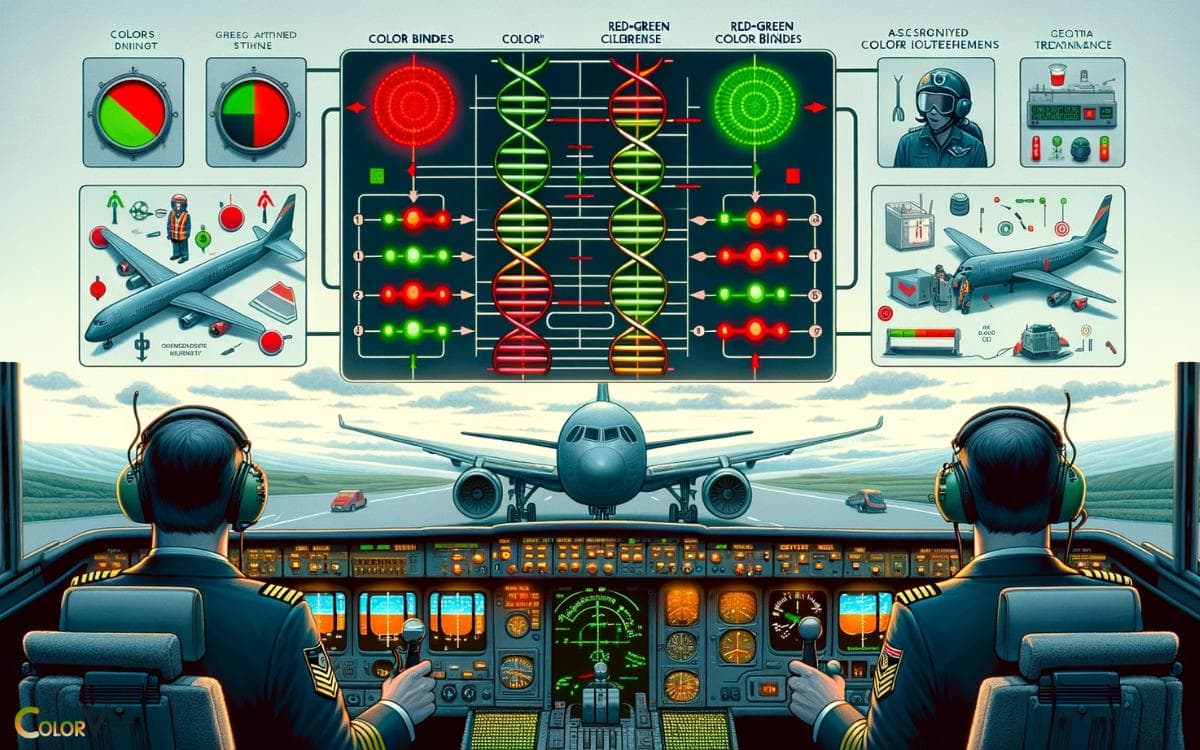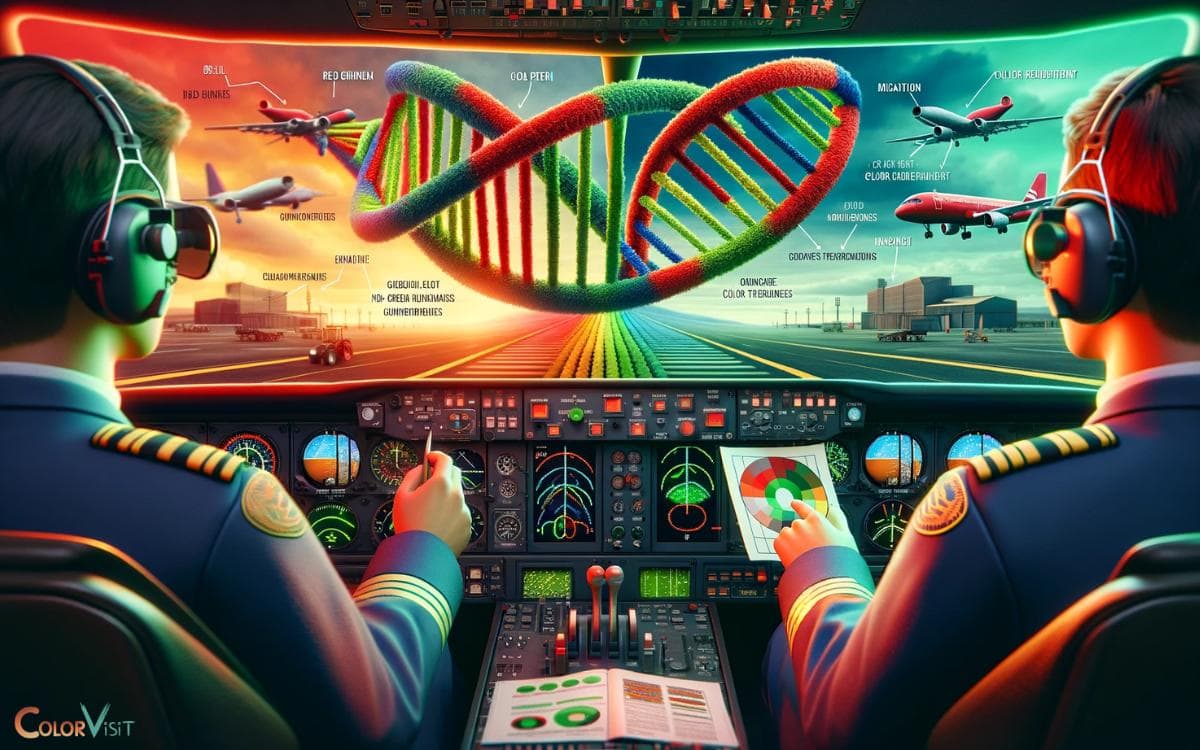Can You Be a Pilot With Red Green Color Blindness? Yes!
Yes, you can still be a pilot if you have red-green color blindness, but there may be some restrictions depending on the severity of your condition and the specific requirements of the aviation authority in your country.
Pilots need to identify different colors to operate an aircraft safely. Because of this, red-green color blindness can pose challenges.
For instance, if you can distinguish colors during practical tests or with the aid of corrective lenses, you may still be eligible to fly.
For example, in the United States, the FAA (Federal Aviation Administration) requires pilots to pass a color vision test during their medical examination.
If you fail the initial test but can successfully recognize and identify colors in a real-world test or using a signal light test, you may be granted a waiver or exemption.
Being red-green color blind doesn’t mean you can’t be a pilot. With correct guidance and determination, you can navigate the regulations and successfully start your career in aviation.
Key Takeaway
Understanding Red Green Color Blindness
Red-green color blindness is a condition that affects a person’s ability to distinguish between these two colors.
If you are a pilot with this condition, it may limit your career prospects as certain signal lights and charts rely on these colors for communication and navigation.
What Is Red Green Color Blindness?
- Red-green color blindness is a common type of color vision deficiency.
- It is more prevalent in males than females.
- Individuals with this condition have a reduced ability to differentiate between shades of red and green.
- Certain hues may appear as similar shades of orange, yellow, or brown.
Causes And Types Of Red Green Color Blindness:
There are two main types of red-green color blindness:
Protanopia:
- People with protanopia lack the functioning red cones in their retinas.
- They have difficulty perceiving red light, which may appear as dull or faded.
- In some cases, the distinction between certain shades of red and green is challenging.
Deuteranopia:
- Deuteranopia occurs when the green cones in the retina do not function properly.
- Individuals with deuteranopia may struggle to differentiate between red and green hues.
- Some shades of green may appear as gray or beige.
When it comes to the causes of red-green color blindness, it is primarily inherited through genetic factors.
The condition is linked to an alteration in the X chromosome, which is more commonly found in males. However, it is possible for females to also inherit red-green color blindness. This is due to the fact that females have two X chromosomes, so a normal copy can mask the effects of the altered one. In contrast, male carriers of color blindness are more likely to express the condition, as they have only one X chromosome. Awareness of these genetic factors can help in understanding the inheritance patterns and implications for family members.
Impact Of Color Blindness On Pilot Training
Red-green color blindness can impact pilot training as it affects the ability to distinguish between certain colors, crucial for navigation and reading instruments.
Pilots with this condition may face limitations in their career path and must meet specific requirements for color vision in order to be eligible for certain roles.
Color Vision Requirements For Pilots
- Pilots are required to have good color vision as it is crucial for them to accurately identify and differentiate between the various colored lights, signals, and navigation instruments in the cockpit.
- Red-green color blindness is the most common form of color vision deficiency among individuals, affecting their ability to perceive certain shades of red and green.
- Depending on the severity of the color blindness, individuals may still be able to meet the color vision requirements for pilot training.
How Red Green Color Blindness Affects Pilot Training?
- Individuals with red-green color blindness may face certain challenges during pilot training due to the reliance on accurate color perception in the aviation field.
- The ability to distinguish between different colored navigation and instrument lights is vital for pilots, and color blindness can impact their accuracy in interpreting these signals.
- However, it is important to note that not all aviation tasks rely solely on color vision, and individuals with color blindness can still pursue a career as a pilot with certain accommodations.
Challenges Faced By Color Blind Pilots
- Color blind pilots may encounter difficulties in interpreting signals from air traffic control towers and other pilots in the form of colored lights, signals, and markers.
- The identification of colored runway lights and visual aids might pose challenges, leading to potential confusion or misinterpretation.
- Red-green color blindness may restrict opportunities in certain aviation fields, such as becoming a commercial airline pilot, which often requires normal color vision.
Understanding the impact of color blindness on pilot training is essential for individuals aspiring to become pilots.
While red-green color blindness can present challenges, it does not necessarily disqualify individuals from pursuing a career in aviation.
Overcoming Color Vision Requirements
Discover the possibilities of becoming a pilot even if you have red-green color blindness. Overcoming color vision requirements is an achievable goal for aspiring pilots.
Whether or not you can be a pilot with this condition is a matter of discussion and specialized testing.
Specialized Training For Color Blind Pilots:
Some aviation authorities offer specialized testing for pilots with color blindness.
- These tests are designed to evaluate an individual’s ability to identify and differentiate between colored lights, ensuring they can meet the necessary requirements to operate an aircraft safely.
- In certain cases, color blind pilots can undergo training and opt for color vision correction techniques.
These techniques involve the use of special lenses or filters that enhance color perception, allowing pilots to meet the required standards.
Advancements In Technology For Color Blind Pilots:
Technological advancements have led to the development of various color vision assistance tools.
- These tools use augmented reality or software applications to aid color blind pilots in identifying colors accurately, both inside and outside the cockpit.
- Aircraft manufacturers have recognized the need to accommodate color blind pilots and have developed enhanced cockpit displays.
These displays use different color coding techniques that make instruments and indicators easily distinguishable, regardless of color vision deficiencies.
Conclusion
Having red-green color blindness does pose significant challenges for individuals aspiring to become pilots.
The inability to accurately perceive colors can hinder pilots’ ability to interpret cockpit displays, identify navigation lights, and discern color-coded instruments.
However, it is important to note that each case of color blindness is unique, with varying degrees of severity.
Some individuals may still meet the requirements for a pilot’s license by demonstrating alternative methods of color differentiation or passing specialized color vision tests.







